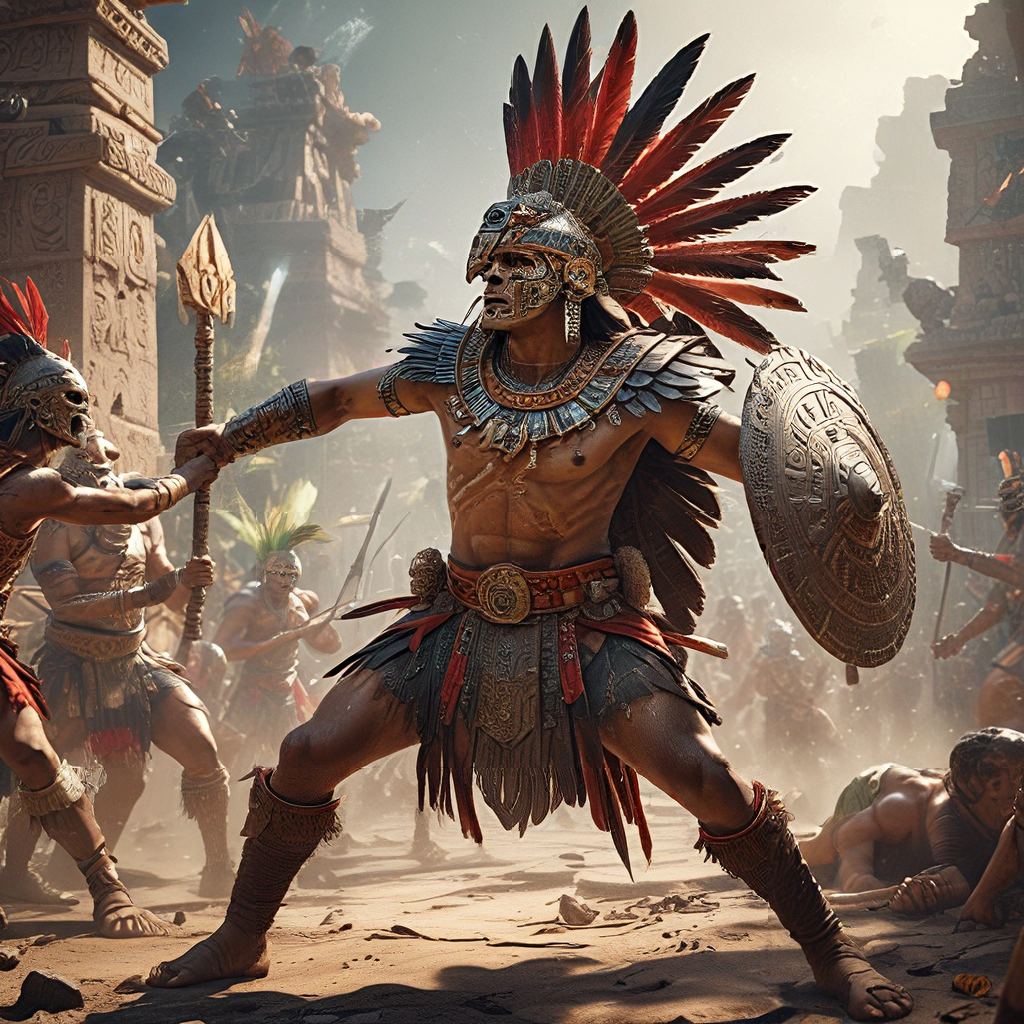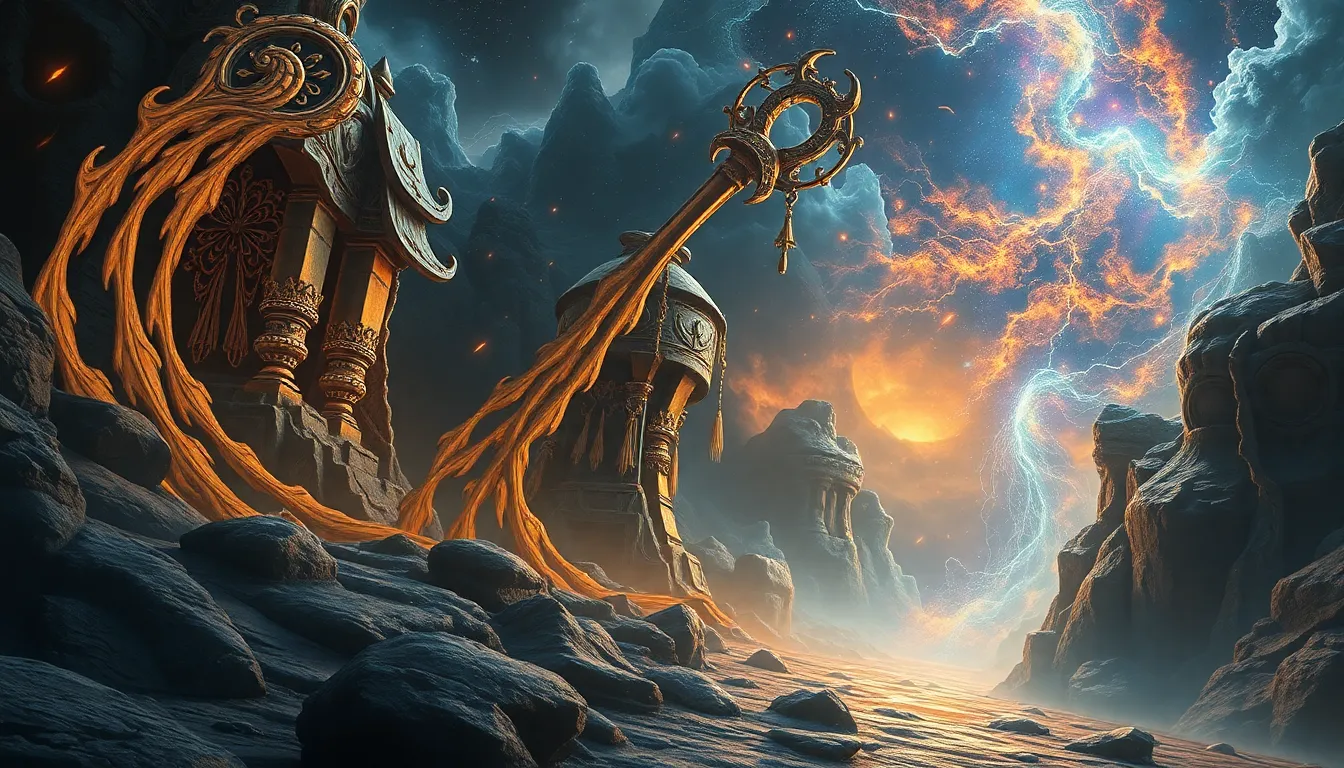Fenrir and the Gods: The Wolf’s Relationship with the Aesir and Vanir
I. Introduction
In Norse mythology, Fenrir stands as one of the most formidable and complex figures. This monstrous wolf is not only a symbol of chaos and destruction but also a pivotal character in the tales of the gods. The Aesir and Vanir, the two principal pantheons in Norse belief, represent different aspects of divinity, each with its own stories and significance. This article aims to explore the intricate relationship between Fenrir and these divine beings, shedding light on the dynamics of power, fear, and prophecy that define their interactions.
II. Origins of Fenrir
A. Birth and lineage: Fenrir’s parentage
Fenrir is the offspring of the trickster god Loki and the giantess Angerboda. His lineage places him at the intersection of chaos and order, as Loki is both a god and a figure of mischief, while Angerboda is a giantess, a being often associated with primordial forces. Fenrir’s siblings include Jormungandr, the Midgard serpent, and Hel, the goddess of the underworld, further emphasizing his ties to the darker aspects of existence.
B. The role of Loki in Fenrir’s story
Loki’s actions are central to the unfolding of Fenrir’s tale. As a complex character, Loki embodies both the cunning and the unpredictable nature of fate. His relationship with Fenrir is marked by a blend of affection and fear, as he recognizes the potential of his progeny to bring about destruction. This duality sets the stage for the tension that arises between Fenrir and the Aesir.
C. Prophecies surrounding Fenrir’s fate
From the moment of his birth, prophecies foretold of Fenrir’s future role in Ragnarok, the end of the world in Norse mythology. These ominous predictions cast a long shadow over his existence, influencing how the Aesir would interact with him as he grew. The fear of his eventual betrayal and destruction fueled the gods’ actions and decisions regarding Fenrir.
III. Fenrir’s Early Interactions with the Aesir
A. Initial encounters and perceptions of Fenrir by the gods
Initially, the Aesir viewed Fenrir with a mix of curiosity and trepidation. As a wolf of immense size and strength, he commanded respect and fear. The gods debated among themselves about how to handle his presence. While some saw the potential for Fenrir to become a powerful ally, others worried about the implications of raising a creature destined to bring chaos.
B. The decision to raise Fenrir among the Aesir
Despite their fears, the Aesir decided to raise Fenrir among them, believing that nurturing him could mitigate the threats he posed. This decision was rooted in a desire to control his fate, but it also sowed the seeds of mistrust. As Fenrir grew, so did his strength, leading to increasing unease among the gods.
C. Growing tension and fear among the gods
The tension between Fenrir and the Aesir escalated as he matured. The gods recognized that their attempts to keep him close were fraught with danger. Whispers of prophecies and impending doom circulated among them, and the once hopeful bond began to fray, culminating in fear and suspicion.
IV. The Binding of Fenrir
A. The prophecy of Fenrir’s destructive future
The prophecies predicting Fenrir’s role in Ragnarok became a self-fulfilling prophecy as the Aesir’s fear of him grew. They foresaw that Fenrir would break free from any bonds and wreak havoc during the final battle, especially targeting Odin, the chief of the Aesir. This impending doom drove the gods to take drastic measures.
B. Attempts by the Aesir to bind Fenrir: the role of Gleipnir
In a bid to prevent the foretold chaos, the Aesir sought to bind Fenrir. They created a magical chain called Gleipnir, made from six impossibly rare ingredients: the sound of a cat’s footfall, the beard of a woman, the roots of a mountain, the sinews of a bear, the breath of a fish, and the spittle of a bird. This chain was deceptively light but incredibly strong, designed to hold Fenrir against his will.
C. Fenrir’s response to the gods’ attempts and the significance of the binding
When the Aesir approached Fenrir with Gleipnir, he initially agreed to be bound, but only on the condition that one of the gods place their hand in his mouth as a pledge of trust. Tyr, the god of war and justice, volunteered, knowing the risk. When Fenrir realized he had been deceived and could not break free from Gleipnir, he bit off Tyr’s hand in a furious act of betrayal. This event solidified Fenrir’s role as an adversary of the Aesir and marked a turning point in their relationship.
V. Fenrir’s Relationship with the Vanir
A. Distinctions between Aesir and Vanir gods
The Aesir and Vanir represent two branches of the Norse pantheon, with the Aesir associated with war and governance, while the Vanir are linked to fertility, prosperity, and nature. This distinction plays a crucial role in understanding Fenrir’s relationship with both groups of deities.
B. Possible interactions and conflicts with the Vanir
While Fenrir’s primary interactions are with the Aesir, there are implications of how he might have been perceived by the Vanir. Since the Vanir gods are often associated with a more balanced and nature-oriented view of the world, their perspective on Fenrir could have been different from that of the Aesir. However, the myths do not elaborate significantly on direct encounters between Fenrir and the Vanir.
C. Fenrir’s symbolic representation in relation to the Vanir
Fenrir can be viewed as a symbol of the chaotic forces that the Vanir might have sought to understand or appease. The tension between order and chaos is a recurring theme in Norse mythology, and Fenrir embodies the potential for destruction that exists within nature itself. This duality resonates within the Vanir’s connection to the earth and its untamed aspects.
VI. Fenrir in Ragnarok
A. The role of Fenrir in the events of Ragnarok
Fenrir’s most significant role comes during Ragnarok, where he is prophesied to break free from his bindings and join the battle against the Aesir. His liberation symbolizes the overwhelming force of chaos unleashed upon the world. The wolf’s actions are crucial in the cataclysmic events that lead to the destruction of the gods.
B. The prophecy of Fenrir’s confrontation with Odin
One of the most chilling prophecies involves Fenrir confronting Odin, the Allfather. This battle is steeped in tragedy, as it foretells Odin’s death at the hands of Fenrir, representing the ultimate victory of chaos over order. This confrontation is not just a physical battle but also a clash of ideologies—fate versus free will.
C. Implications of Fenrir’s actions during Ragnarok for the Aesir and Vanir
Fenrir’s actions during Ragnarok have far-reaching implications for both the Aesir and Vanir. The Aesir face their demise, signifying the end of an era, while the Vanir’s fate remains less clear. The chaos unleashed by Fenrir serves as a reminder of the ever-present balance between creation and destruction in the cosmos.
VII. Symbolism of Fenrir in Norse Mythology
A. Fenrir as a representation of chaos and destruction
Fenrir is often interpreted as a symbol of chaos and the uncontrollable aspects of nature. His very existence challenges the order established by the Aesir, serving as a reminder that chaos is an integral part of life and existence.
B. Exploration of themes of fate, power, and resistance
The story of Fenrir


